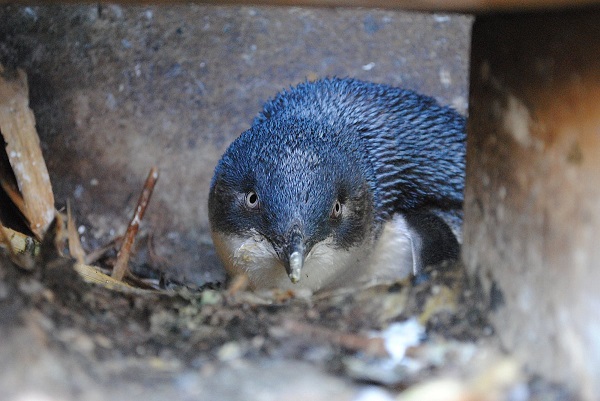
Blue penguins, also known as little penguins or fairy penguins, are fascinating creatures with several fun and interesting facts associated with them:
Size Matters: Blue penguins are the smallest species of penguins in the world. They stand at just 12 to 16 inches tall and weigh between 2.2 to 3.3 pounds. Their diminutive size makes them unique among their penguin relatives.
Blue Plumage: These penguins get their name from the bluish tint of their feathers. While their plumage appears blue in color, it can range from slate blue to indigo, making them stand out among other penguin species.
Nocturnal Navigators: Blue penguins are known to be primarily nocturnal, which means they are most active during the night. They return to their nesting sites after a day of hunting at sea, often under the cover of darkness.
Fast Swimmers: Despite their small size, blue penguins are excellent swimmers and can reach speeds of up to 1.5 miles per hour. They use their flippers to gracefully glide through the water in search of prey.
Communal Nesting: Blue penguins are known to nest in colonies, and their nesting sites can be quite diverse, ranging from sandy beaches to rocky crevices and even burrows. They are social birds and often build their nests near one another.
Unique Vocalizations: These penguins are not just silent waddlers; they communicate with various vocalizations. They produce a range of sounds, including braying calls and trumpeting noises, to communicate with their mates and chicks.
Monogamous Mates: Blue penguins are known for forming monogamous pair bonds with their mates. Once they choose a partner, they often remain together for the breeding season or even longer.
Lifespan: In the wild, blue penguins typically have a lifespan of around 6 to 7 years. However, in captivity, they can live significantly longer, with some individuals reaching their late teens.
Molt Migration: During a process called “molting,” blue penguins temporarily lose their waterproof feathers. To avoid predators during this vulnerable period, they often go on a molt migration, spending a few weeks at sea until their new feathers grow in.
Conservation Concerns: Blue penguins face various threats, including habitat destruction, pollution, and the introduction of non-native predators. Conservation efforts are essential to protect these charming birds and their coastal habitats.
Local Legends: In New Zealand, blue penguins hold cultural significance and are sometimes referred to as “kororā.” They are featured in local legends and stories, highlighting their importance to the indigenous Maori culture.
Tourist Attractions: Blue penguins are popular attractions in some coastal regions of Australia and New Zealand. Tourists often gather to watch their nightly “penguin parades” as they return from the sea to their nests.
These fun facts highlight the unique and captivating nature of blue penguins, making them a beloved and cherished species among wildlife enthusiasts and conservationists alike.
Related Articles & Free Email Newsletter Sign Up
How Hummingbirds Play a Vital Role in Your Yard and Garden
Loon: The Iconic Bird Species of Tranquil Lakes


Comment here